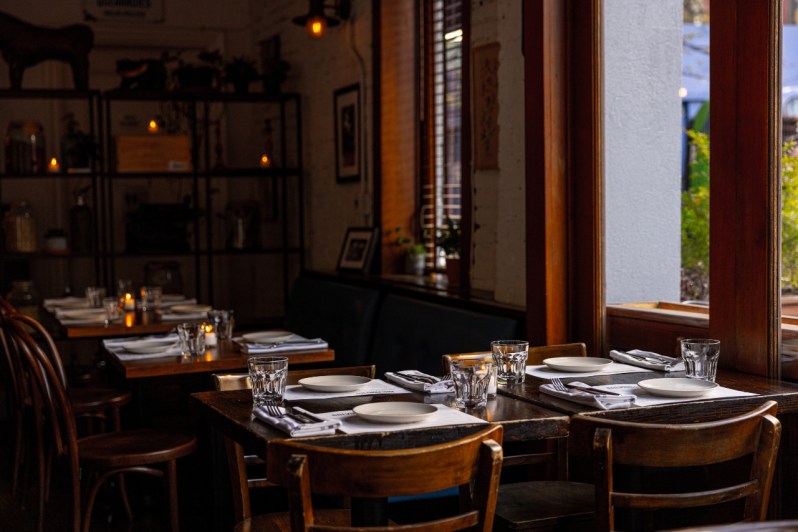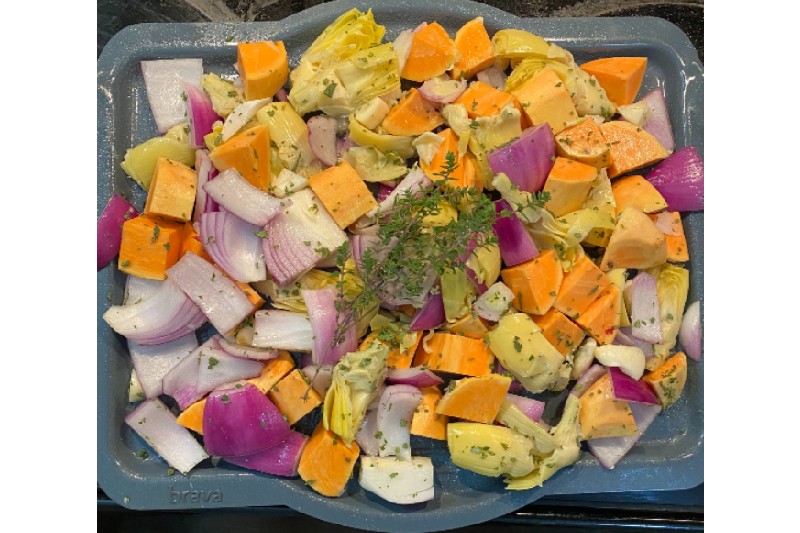
A parade of slow-roasted meats accompanied by herbaceous chimichurri sauce, the Argentinian way of grilling is one of the most delicious barbecue styles in the world. Known as asado, this form of barbecue is prolific in Argentina and Uruguay. Meat is a way of life in Argentina — the average Argentinian consumes an incredible 125.6 pounds of beef a year, coming in second place behind Uruguay in per-capita beef consumption.
An Argentinian asado is delicious for any social gathering and perfectly doable with the right tools and ingredients. All you need is the right beef cuts, seasoning, and techniques. To help guide The Manual through this culinary journey is Fernando Navas, chef and owner of Balvanera, an Argentine-style brasserie in New York City. Read on for everything you need to know about this unique Argentinian Barbecue cuisine, straight from an expert’s mouth.

History of Argentinian barbecue
Cattle were introduced to Argentina in the 16th century by the Spanish. The first breed of cattle was Turdetano, a Spanish breed. Eventually, other breeds, such as the British Angus and Shorthorn, would also be imported to improve meat quality. Cattle were a natural fit to the vast plains and climate of Argentina. By the early 18th century, around 40 million cattle were estimated to be in Argentina. These vast numbers allowed beef to be both cheap and plentiful.
The men who raised these cattle are known as gauchos, and it was these workers who birthed the tradition of Argentinian asado. A favorite pastime of gauchos was barbecuing beef, eating everything from meat to offal like sweetbreads and udder. A popular method involved attaching a splayed small cow onto a metal asado cross and cooking it over slow-burning coals.

The grill
In Argentina, most people prefer to grill meat on a parrilla. Parrillas are grills that have a side firebox, allowing the griller to add wood to refuel the coals, along with a grill grate that’s controlled with an adjustment arm on the side. Parrillas will also be lined with heat refractory bricks to return the fire’s heat to the grill grates.
According to Navas, there’s a key difference between a parrilla and the average American charcoal grill.
“American grilling is always at a higher temperature, while Argentine grilling is usually slower with lower heat and longer cooking times,” said Navas. “In Argentina, we love to grill outdoors using different woods and charcoal for an extensive amount of time — especially when it comes to making the short ribs or asado de tira and flank steak or vacio.”
The meat
Beef is the centerpiece of the Argentinian asado. While pork chorizos or blood sausage are popular, beef cuts are the star. Cuts familiar to Americans like bife de chorizo (NY strip), ojo de bife (ribeye), and entraña (skirt steak) are all popular. Because of the unique setup of the parrilla, Argentinians love to slow cook large cuts not traditionally popular for American grilling, such as short ribs. Also, most Argentinian beef is grass-fed, resulting in a different flavor than grain-fed American beef.
“Grass-fed beef has a more gamey flavor and less fat, which is healthier, but leaner and with a bit more texture than corn fed,” said Navas. “The fat has a yellowish hue to it (beta carotene, which is a natural vitamin A) and incredible depth of flavor.”
Another key asado difference is the Argentinian preference for more well-done meat when compared to most American eaters. American eaters, on average, prefer tenderness. But Argentinians place a premium on cuts with an intensely beefy flavor, which is most common in cuts that require longer cooking at lower temperatures. The short rib and brisket are good examples of these cuts. Most Argentinians enjoy their beef cooked medium-well. If you’re looking for a rarer meat temperature at an Argentinian asado, simply request your steak be cooked “a punto a jugoso,” for pink and juicy.

The seasoning
Asado is all about maintaining the natural flavor of beef, so marinades or spice rubs are rare. For a true Argentinian touch, use a special grilling salt known as sal parrillero. It’s a heavy-grain salt that dissolves slowly and is perfect for slow-grilling beef. Sometimes a bit of black pepper is also used for seasoning.
The famous tangy and herbaceous chimichurri sauce is a common sight for any asado. There isn’t one standard chimichurri recipe, as every Argentinian family has their own version. Usually, chimichurri features some combination of finely chopped parsley (cilantro and oregano are common as well) with crushed garlic, finely chopped chilis, and onion, all stirred with salt, oil, and vinegar. Traditionally, the ingredients are diced and whisked together with a fork until emulsification occurs.
Nowadays, many people use a food processor or blender to save time, although some think this method produces a slightly bitter taste in the finished sauce. Another popular condiment is salsa criolla, a mix of chopped tomatoes, bell peppers, garlic, chilis, and cilantro with vinegar and oil.

Balvanera’s Entraña
“Choose a good quality piece of meat and understand where it comes from — how it was raised and where it was raised.,” said Navas. “Always bring the beef to room temperature before cooking. If you’ve purchased a great quality piece, refrain from using marinades. Try it with just some salt so you can focus on the flavor of the beef. Then, if you want to change things up throughout dinner, bring on the chimichurri or the salsa criolla.”
Check out this recipe:
Total: 23 minutes
Active: 13 minutes
Yield: 2 servings
Ingredients:
- 1 lb entraña (skirt steak), USDA Prime
- Sea salt
Method:
- Clean the skirt steak, leaving some of the fat around it.
- Leave it at room temperature for 10 minutes before grilling.
- Season with sea salt on both sides.
- On the high-heat side of the grill, place the skirt steak and cook for 4 minutes on each side.
- Remove from the grill and allow to rest for at least 5 minutes. Before serving, you may choose to brush with some olive oil or beef fat (rendered from trimmings) for both flavor and that juicy sheen.

Authentic sides and appetizers
For the most authentic Argentinian asado experience, try some of these appetizers and sides along with your delicious barbecue.
- Take the best vegetables in season, grill it to perfection, and then top with chimichurri sauce
- Slice potatoes, toss them in ground chili, grill, and then sprinkle with paprika
- Thickly cut slices of provolone, grilled until perfectly golden brown and then served with bread is an Argentinian specialty called provoleta.
- Empanadas — small turnovers stuffed with your choice of filler. For an Argentinian flair, include chimichurri.



